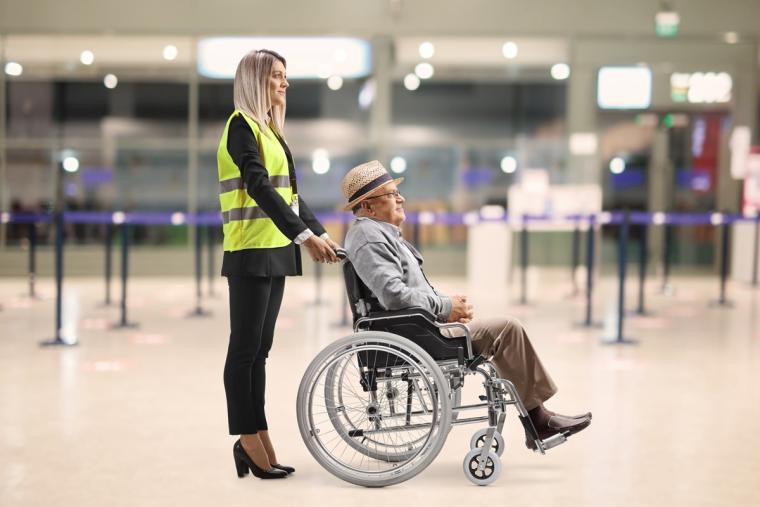
While much has been written about emerging sectors of tourism (eco-tourism, agritourism, etc.), one getting quite a bit of attention recently just might fall into the category of “What took them so long?” It is dementia-friendly tourism and it is gaining a powerful voice.
According to National Geographic, scientists predict that by 2050, about 153 million people worldwide will have dementia. About 13 million of those will have Alzheimer’s, says the Alzheimer’s Association.
Many of those people, however, don’t just refuse to give in to the ravages of the disease; they’re attacking things head on, continuing to travel and explore the world. It is being propelled by an expanding population of active seniors who understand the research showing that dementia can be slowed, or even held at bay, by socializing, physical exercise, staying mentally active and getting vitamin D from exposure to the sun.
More seniors are staying active in sports than ever before, as well, and even among those who are not affected, many who have seen a decline in a spouse or friend are loathe to leave those people behind when they travel. Ultimately, new dementia-friendly measures being taken allow more families to travel together, to visit relatives or sightsee, and to enjoy people’s company. That includes those who are participating in multi-sport events for seniors, as well as families taking children to sports events and wanting to bring grandparents along.
The best part: The industry is taking notice – and adapting.
In July 2023, Phoenix Sky Harbor hosted a dementia-friendly travel workshop, one of a steadily growing number of such workshops in the USA. At such events, individuals affected by dementia as well as their family members or friends are able to learn about the resources available at the airport and what assistance airlines could offer upon request. (The airport saw such success with the workshop that it recently offered a second one.)
Phoenix isn’t alone, according to the Associated Press, which notes, “Nearly a dozen airports, from Phoenix to Kansas City, Missouri, in the last few years have modified their facilities and operations to be more dementia-friendly, advocates say. They’ve added amenities like quiet rooms and a simulation center where travelers with dementia can learn about flying or get a refresher.”
It's a long-overdue series of modifications because up until this time, families who had a relative with any cognitive issue had two options and the one that most often was chosen, unfortunately, was to have the person, and at least one family member, stay behind.
Much change in the logistics of travel has been driven by the Dementia-Friendly Airports Working Group, which lobbies for airports and airlines to implement dementia-inclusive policies.
 AP further notes that the group worked with London’s Gatwick Airport to create a visual cue for airport workers: the Hidden Disabilities Sunflower lanyard program. Light green lanyards with a sunflower pattern are issued to anyone who wants to subtly indicate they or a travel companion has dementia or a not-as-visible disability. The lanyards let airport and airline personnel know the traveler may need more attention and perhaps need information repeated. The program is now in more than 200 airports worldwide.
AP further notes that the group worked with London’s Gatwick Airport to create a visual cue for airport workers: the Hidden Disabilities Sunflower lanyard program. Light green lanyards with a sunflower pattern are issued to anyone who wants to subtly indicate they or a travel companion has dementia or a not-as-visible disability. The lanyards let airport and airline personnel know the traveler may need more attention and perhaps need information repeated. The program is now in more than 200 airports worldwide.
One of the first airports the group reached out to was the Missoula Montana Airport, a certified “sensory inclusive” facility. The group went over issues that can arise with lighting, floor design and noise. It also incorporated sunflower lanyards.
“It’s already a high-stress, anxiety-driven environment for anyone not suffering from a hidden disability,” said airport Deputy Director Tim Damrow. “One reason people come here to Montana is for friendly people and obviously for the amazing scenery. We wanted to make sure that everyone is welcomed and treated with the dignity and respect they deserve.”
Missoula also has the Dementia Friendly Missoula program, a volunteer coalition affiliated with Missoula Aging Services and is the local chapter of the national Dementia Friendly America movement. The Missoula Public Library also offers a Hidden Sunflower Disability Program to make it easier for people with non-visible disabilities to feel welcome at the library.
And tourism itself is beginning to cater to individuals with dementia and other cognitive issues. NatGeo notes that increasingly, tourist attractions are starting to offer special programs designed to drive engagement at various levels. New York’s Museum of Modern Art has educators who lead visitors with dementia through art appreciation lessons.
Additionally, more than a dozen museums, galleries, and nature centers across Wisconsin, Minnesota, Michigan, Tennessee and Colorado have joined the Spark! cultural program, which provides workshops for people with dementia.
On the global level, Australia is leading the way, with programs like “memory cafés" can socialize while enjoying morning tea, and even dementia-friendly sensory trails, complete with comfortable seats, easy-to-read signage and places where users are encouraged to touch the bark of trees or smell nearby plants. (The USA has implemented sensory-friendly trails for neurodiverse individuals, although it has yet to implement a recreational facility dedicated to those with dementia.)
Unfortunately, adaptations for those with dementia are lagging behind other forms of tourism; those who work in the sector say it is because such programs are not, in general, strong drivers of revenue.

